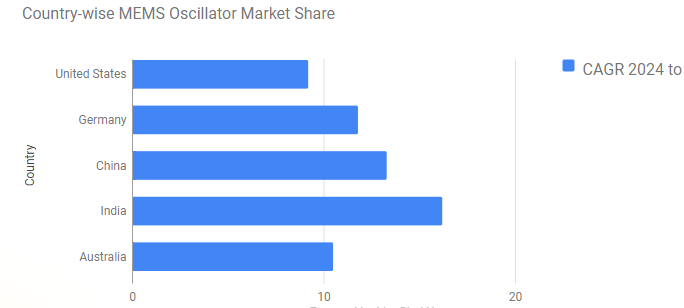MEMS oscillators, microscopic marvels of microelectromechanical systems (MEMS) technology, are revolutionizing timing solutions across various industries. These compact, reliable devices generate precise reference frequencies, playing a crucial role in numerous electronic devices. Let’s explore the applications driving the MEMS oscillator market and the exciting opportunities on the horizon.
Applications: Keeping Devices in Time
MEMS oscillators offer several advantages over traditional quartz crystal oscillators, making them ideal for various applications:
- Mobile Devices: The miniaturization and low-power consumption of MEMS oscillators make them perfect for smartphones, tablets, and wearable electronics.
- Internet of Things (IoT): MEMS oscillators enable size and power efficiency in countless IoT devices, ensuring reliable timing for sensors, wearables, and smart home devices.
- Consumer Electronics: MEMS oscillators are used in navigation devices, drones, gaming consoles, and other consumer electronics, providing accurate timing signals.
- Automotive Electronics: MEMS oscillators contribute to advanced driver-assistance systems (ADAS), infotainment systems, and other automotive electronics requiring precise timing.
- Networking Equipment: Telecommunication equipment and data center servers rely on MEMS oscillators for reliable network synchronization.
- Industrial Applications: MEMS oscillators find applications in industrial automation, process control systems, and various industrial equipment requiring stable timing references.
Opportunities Fueling Market Growth:
- Miniaturization Trend: The continuous miniaturization of electronic devices creates a strong demand for smaller and more efficient timing solutions, favoring MEMS oscillators.
- Growing IoT Market: The exponential growth of the IoT market is driving the need for low-power, reliable timing components like MEMS oscillators.
- Advancements in MEMS Technology: Improvements in MEMS fabrication techniques are leading to higher performance, lower power consumption, and wider frequency ranges in MEMS oscillators.
- Focus on Multifunctionality: Development of MEMS oscillators with integrated functionalities like temperature compensation and voltage control can expand their application potential.
- Emerging Applications: MEMS oscillators hold promise for applications in 5G infrastructure, autonomous vehicles, and wearable health monitors, creating new market opportunities.
Capitalizing on the Opportunities:
- Innovation in Design and Materials: Developing MEMS oscillators with improved performance, lower power consumption, and wider operating temperature ranges can cater to diverse applications.
- Collaboration with Device Manufacturers: Collaboration with manufacturers of mobile devices, IoT devices, and other electronics can ensure compatibility and drive adoption of MEMS oscillators.
- Focus on Cost Competitiveness: Balancing innovation with cost-effective manufacturing processes can make MEMS oscillators a more attractive option for budget-conscious device manufacturers.
- Standardization and Certification: Developing industry standards and certifications for MEMS oscillators can build trust and facilitate wider market acceptance.
- Investment in Education and Training: Investing in programs to educate engineers and designers about the capabilities of MEMS oscillators can encourage their implementation in new applications.
Challenges and Considerations:
- Competition from Traditional Oscillators: Established quartz crystal oscillator manufacturers pose competition, and MEMS technology needs to demonstrate clear advantages for wider adoption.
- Limited Production Capacity: The current production capacity of high-performance MEMS oscillators might struggle to meet the growing demand in certain sectors.
- Long-Term Reliability Testing: While MEMS oscillators show promise, long-term reliability testing is crucial to ensure their suitability for critical applications.
